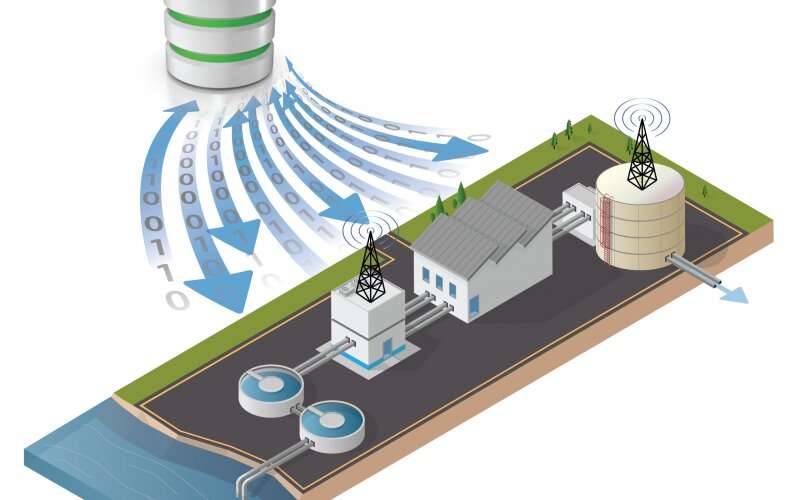ORNL researchers worked with partners at the Colorado School of Mines and Baylor University to develop a new process optimization and control method for a closed-circuit reverse osmosis desalination system. The work is intended to support fully automated, decentralized water treatment plants. Credit: Andrew Sproles/ORNL, U.S. Dept. of Energy
Oak Ridge National Laboratory scientists worked with the Colorado School of Mines and Baylor University to develop and test control methods for autonomous water treatment plants that use less energy and generate less waste.
The team developed a living model of a water treatment process fed by real-world data. The simulation detects and compensates for factors such as sensor fouling, changes in water sources and equipment outages. Results of a pilot-scale demonstration on a closed-circuit reverse osmosis desalination system showed improvements in energy efficiency and waste stream reduction ranging from 8% to 12%.
"The models we're building allow us to try out new control approaches in a realistic simulation before installing them on a full-scale system," said ORNL's Kris Villez.
The goal of the research, which is part of the DOE National Alliance for Water Innovation, is to support a fully autonomous, decentralized and unstaffed water treatment system that could be easily deployed in remote communities or industrial sites.
More information: Dhrubajit Chowdhury et al, Automatic Drift Correction through Nonlinear Sensing, 2021 Resilience Week (RWS) (2021). DOI: 10.1109/RWS52686.2021.9611798
Provided by Oak Ridge National Laboratory
























